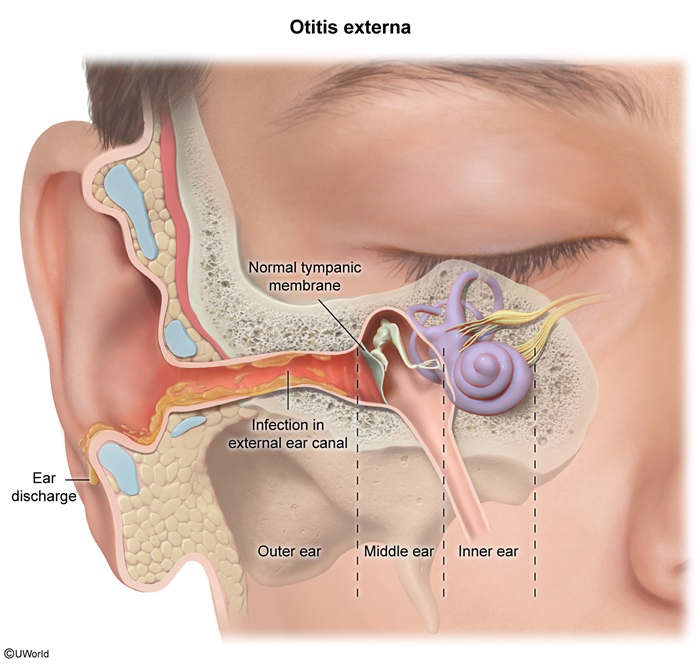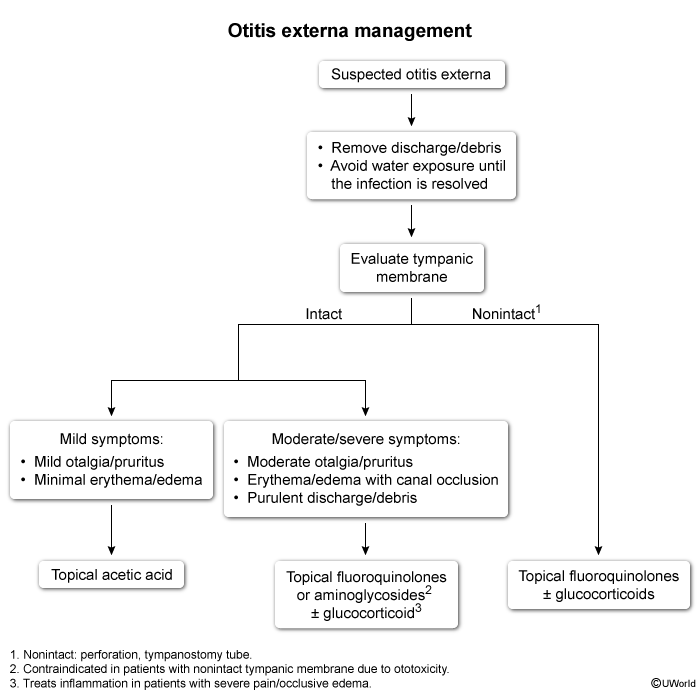Otitis Externa
Article Sections
Introduction
Otitis externa (swimmer's ear) is an inflammatory condition of the external ear canal that most commonly occurs due to bacterial infection.
Pathophysiology and risk factors
Several factors contribute to the development of otitis externa by disrupting the cerumen-skin barrier in the external ear canal. Cerumen is acidic, which inhibits bacterial growth, and hydrophobic, which prevents bacterial entry and skin maceration by repelling water. Cerumen also traps small particles that can become a nidus of infection. Without cerumen, the moist, alkaline external ear canal would be an ideal environment for bacterial growth (Figure 1). Water exposure (eg, outdoor swimming) also introduces pathogenic bacteria into the external ear canal, leading to infection and inflammation.
Therefore, risk factors include:
- Disruptions to the cerumen barrier: water exposure (most common), excessive ear cleaning, occlusive devices (eg, headphones, hearing aids)
Continue Learning with UWorld
Get the full Otitis Externa article plus rich visuals, real-world cases, and in-depth insights from medical experts, all available through the UWorld Medical Library.
Figures

